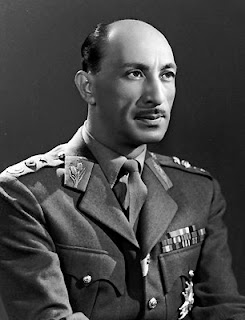Genesis of the Taliban in Afghanistan
King Zahir Shah was the Monarch and absolute ruler of Afghanistan from 8 November 1933 to 17 July 1973. His rule was underlined by peace and stability on Afghanistan's borders and within. He left for medical treatment in Italy in 1973.
While the King was getting medical treatment, his cousin Muhammad Daud Khan plotted to overthrow him. On 17th July 1973, Daud Khan backed by elements of Afghan Army and Communist leaning People's Democratic Party of Afghanistan, He mounted a successful Coup and took over Afghanistan.
Daoud hosted General Secretary of National Awami Party Khan Abdul Wali Khan, Ajmal Khattak, Juma Khan Sufi, Baluch militants, and others. Khan's government and forces also commenced training Pakhtun Zalmay and young Baluchs to conduct militant action and terrorism in Pakistan. Between 27th - 28th of April 1978, communist sleeper cells inside Afghan Army were activated by PDPA leader Hafizullah Amin who had been under house arrest on Daud's orders. In "Saur Revolution" coup that followed, Daud Khan along with most members of his family were massacred.
On 30th April 1978, communist leader Nur Muhammad Taraki took over the Presidency and the control of the communist party. He quickly developed feud with fellow communist Hafizullah Amin who plotted to overthrow him because of disagreement over the power sharing formula.
On 14th September 1979 as Taraki returned from his Moscow trip, he was imprisoned on Hafizullah Amin's orders, who had him executed by suffocation while in captivity - and formally took over the Presidency. Between 14th Sept to 27th December 1979, Hafizullah Amin tried to hang on to power, but he quickly lost confidence of his KGB handlers. KGB believed him to be a double agent of CIA due to his overtures to Washington, a mistake that would prove to be fatal.
By early 1979, 25 out of Afghanistan's 28 provinces were unstable because of armed resistance against the Amin regime. On 29th of March 1979, the Herat uprising began; the uprising turned the revolt into an open war between the Mujahideen and the communist Afghan government.
By 1979, the KGB had lost patience with Amin & KGB Gen Yuri Drozdov approved plans to have him assassinated. 2 attempts were made on his life by the KGB's which failed, so they decided to have him executed in a bloody coup to take place at Tajbeg Palace.
By early-to-mid December 1979, the Soviet leadership had established an alliance with Babrak Karmal, who was to take over after Amin had been assassinated. On 27th Dec 1979, Amin and most of his family were massacred by KGB, Spetsnaz in an operation codenamed: Storm-333.
Babrak Karmal enjoyed complete backing of the USSR when he took over the Presidency on the same day Hafizullah Amin was executed by KGB. For the next 6 years he would oversee the scorched earth campaign of the 40th red Army in his own country, killing over 2m Afghans.
As the Soviet 40th Army intensified its brutal campaign in Afghanistan, a joint "Operation Cyclone" was launched by the CIA and the ISI. Over the next 6 years, the Mujahideen would bring the 40th red Army to its knees along with its communist Afghan military allies.
As the war in Afghanistan turned into "Soviet Vietnam", the KGB recommended overthrow of their blue eyed Babrak Karmal and replace him with the Chief of Afghan Intelligence KHAD, Major Gen Mohammad Najibullah, who deposed Babrak in a bloodless party coup and finally took over;












Comments
Post a Comment